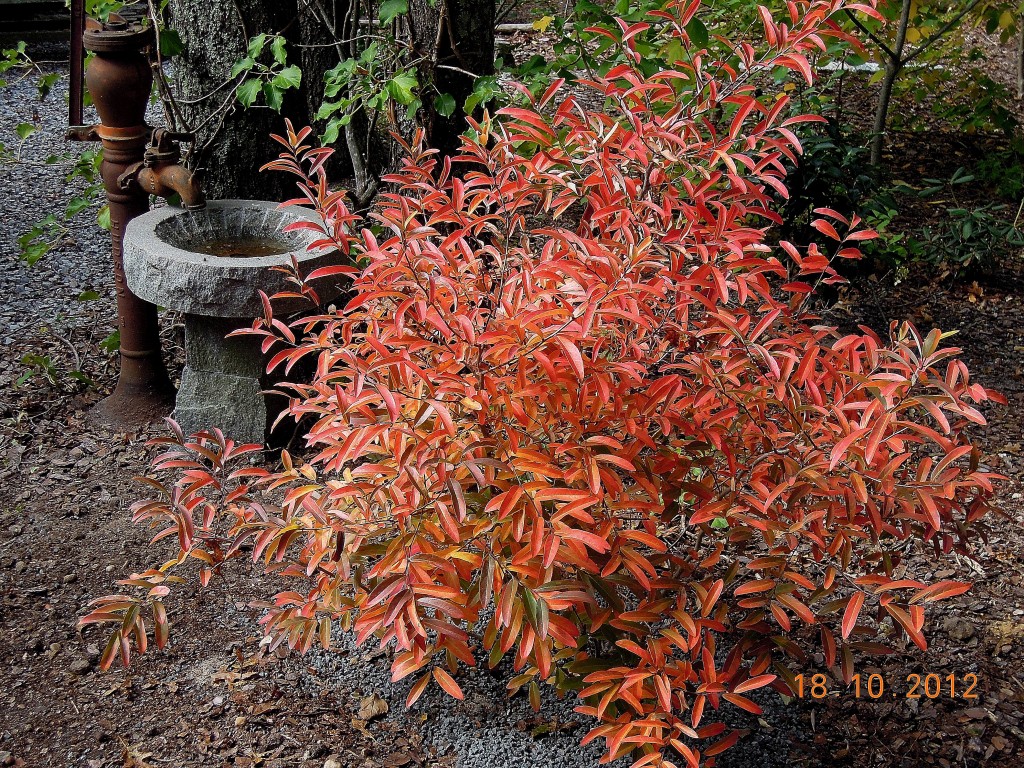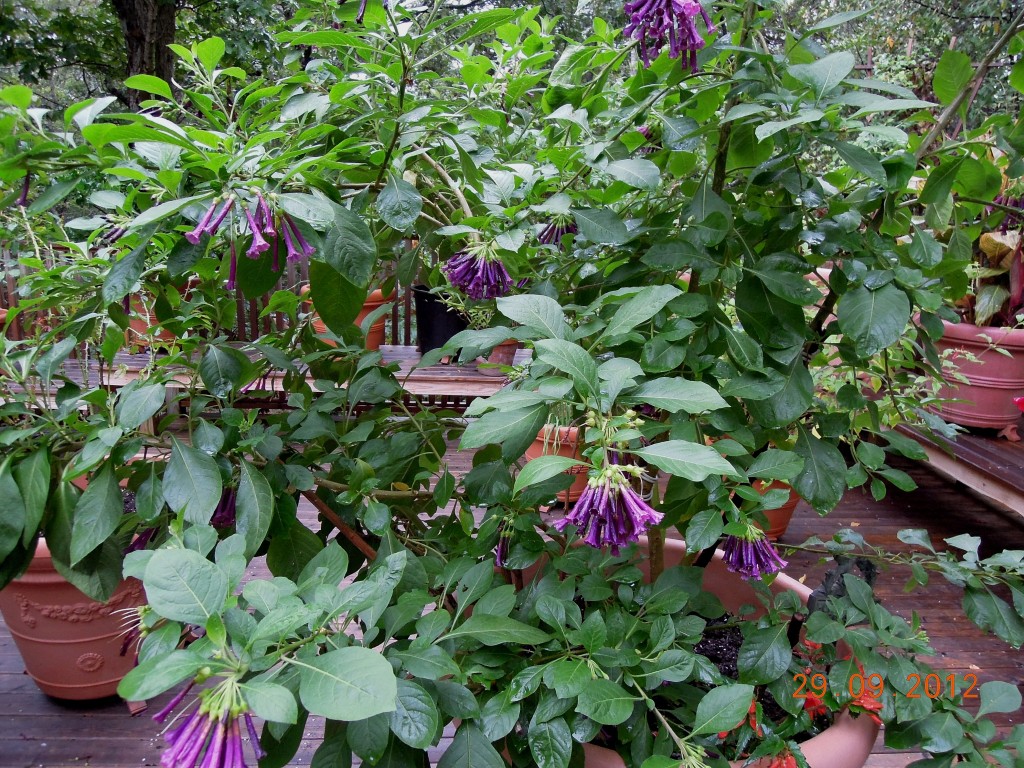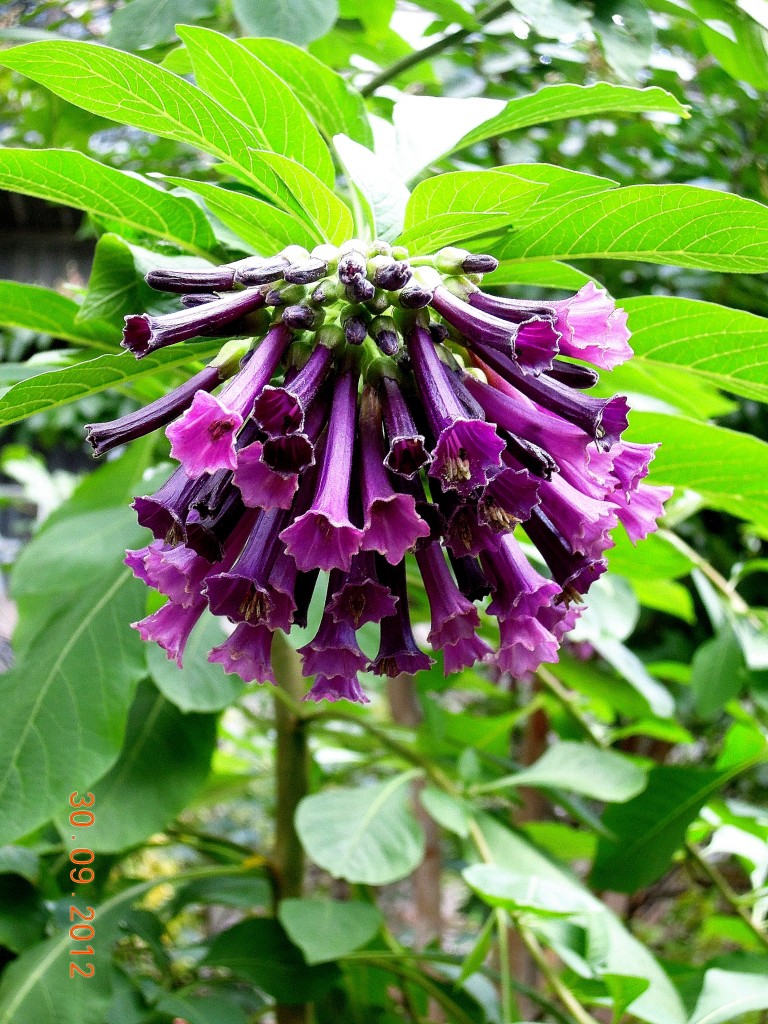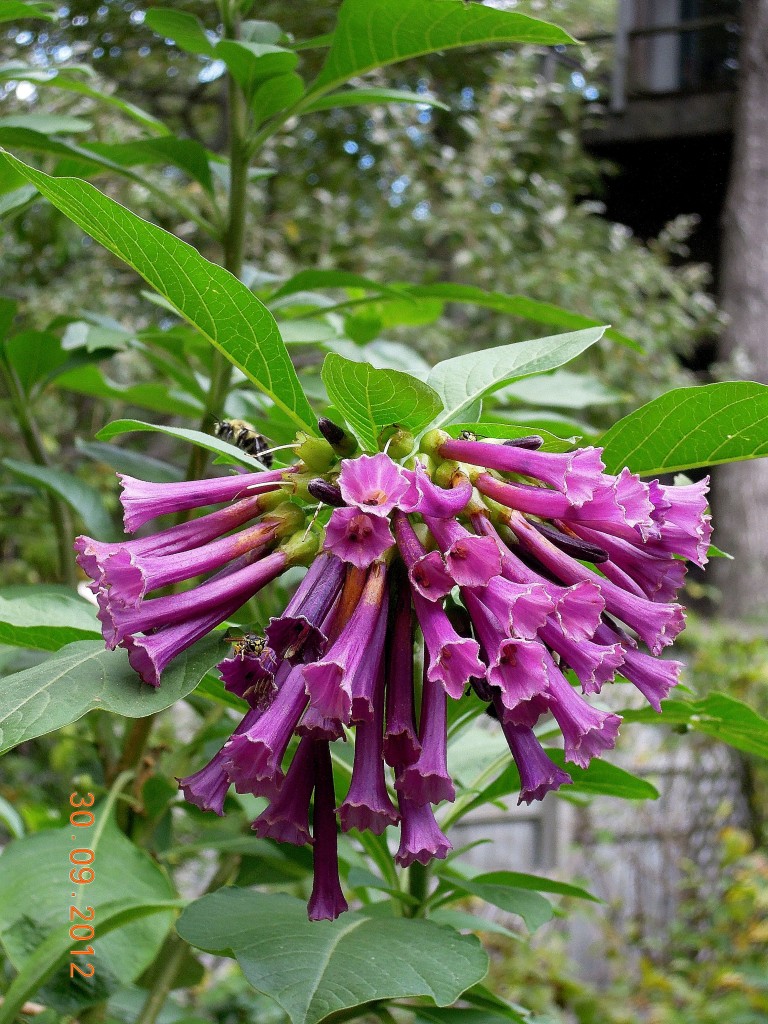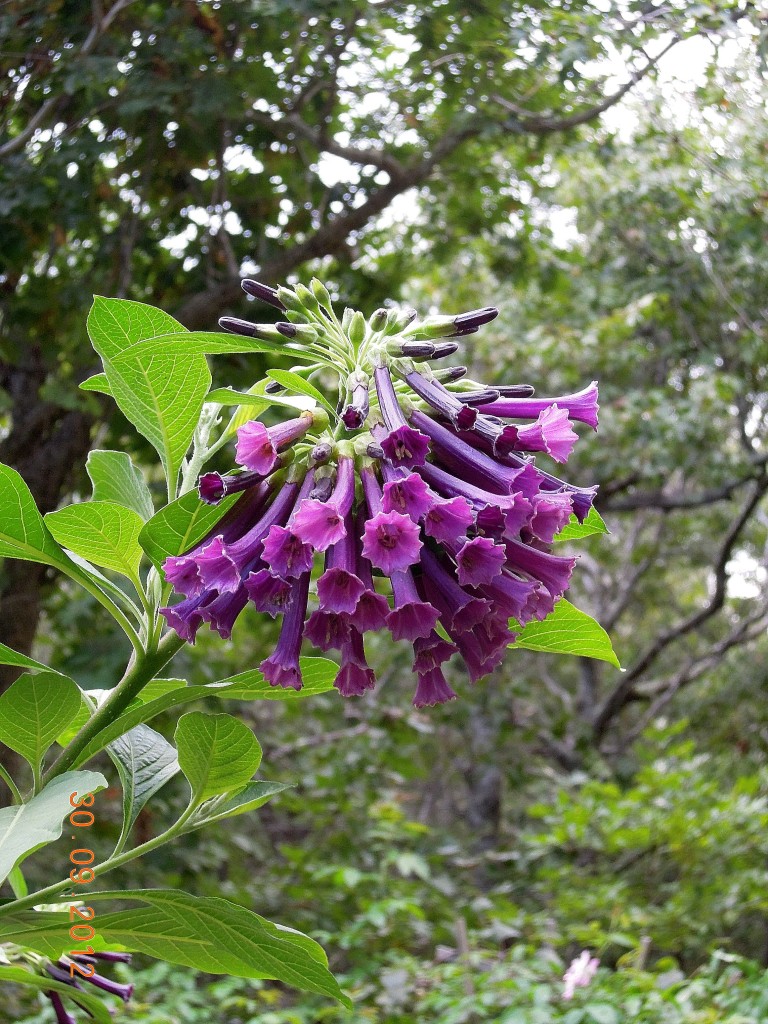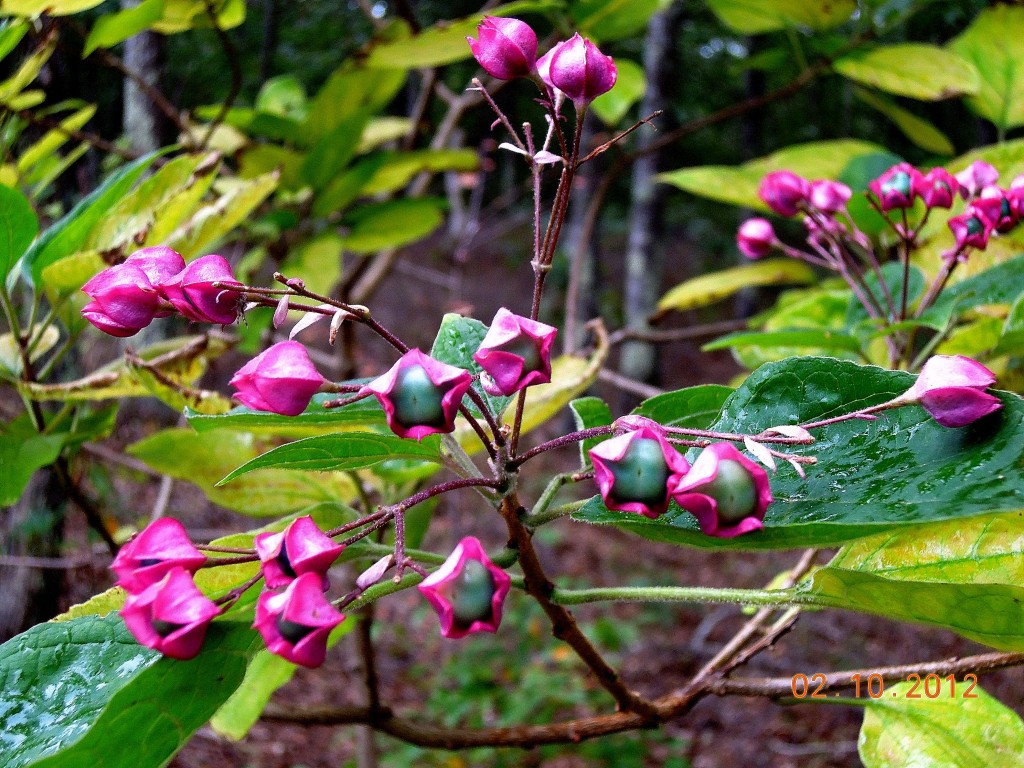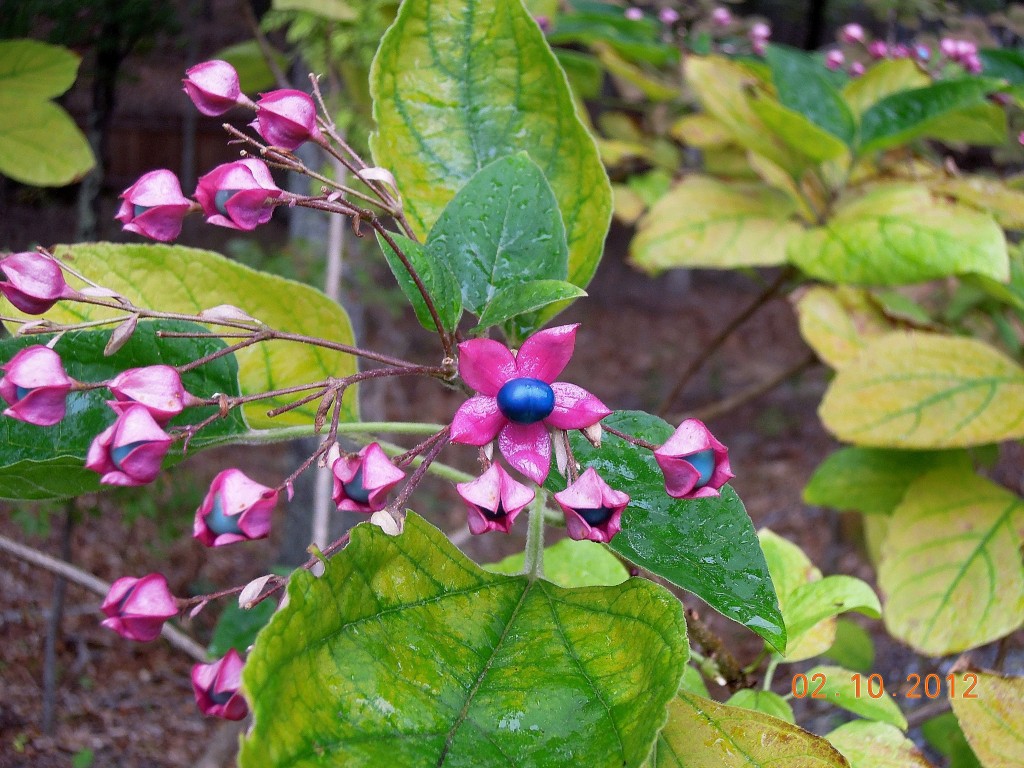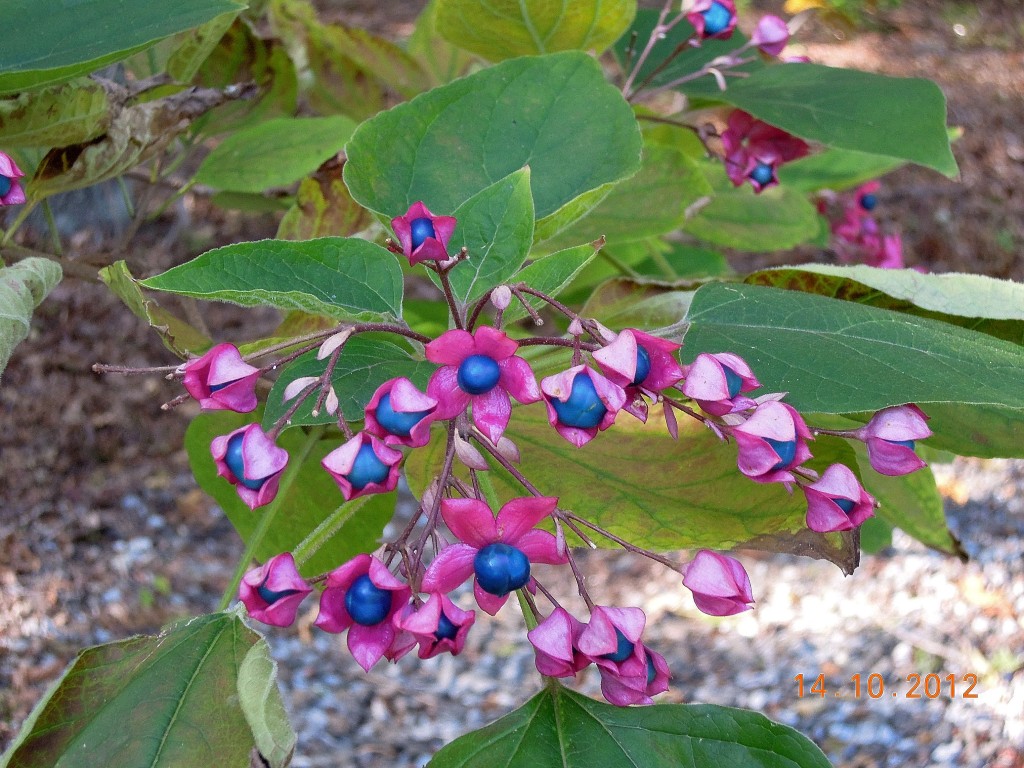I’m besotted. Every day I stand in awe before Lindera angustifolia, the Asian Spicebush, utterly transfixed by its dazzling Fall foliage display of fiery orange and pink. (Not to mention the elegant silvery-gray leaf reverse.)
The shrub is new to my garden and now I can’t imagine the garden without it.
British author, Dame Penelope Lively, got it right: “For me”, she said, “gardening is a sequence of obsessions — the tingle of discovery, the love affair with the latest acquisition”.
My plant is about three feet tall but will reportedly grow from eight to ten feet. What a spectacular autumn sight that will be! I feel faint just thinking about it.
Clusters of small yellow flowers will appear on the stems in early Spring, but only female plants will produce berries; the shrub is dioecious and requires male fertilization. Like its kissin’ cousin, Lindera benzoin (our native Spicebush), L. angustifolia’s leaves have a spicy fragrance, though opinion is split as to whether the flowers are also fragrant. I’ll let you know when it blooms for me. (BTW, the same spicy, herbal foliage is enjoyed by Skimmia japonica and ensures it’s deer-resistance; deer don’t like the smell.)
In accordance with its culture preferences, I planted L. angustifolia in a shady area that gets a bit of filtered sun in the afternoon. The soil is moist, acid and well-drained.
Autumn may well turn out to be my most favorite season.
